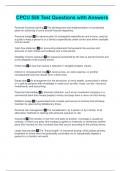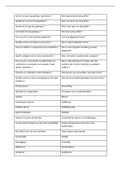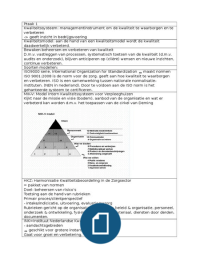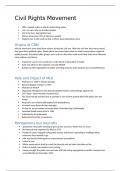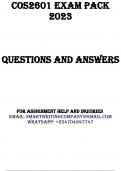A) Influences:
1) Biological
(a) Prenatal: Lack of O2 to brain, Maternal illness, Smoking, drugs, alcohol
(b) General Health
(c) Brain: Genetic, Injury
2) Psychological
(a) Formed by interactions (positive & negative) – influences how you act in situations
3) Sociocultural
(a) Family stability: Mobility, single-parent home, divorce
(b) Economics: Unemployment, homeless
(c) Community: Drugs, crimes
4) Cultural Variance (differences in cultures)
Comparison of Mental Health & Mental Illness handout
o Mental Health
Reflects a person’s approach to life by:
Communicating emotions
Giving & receiving
Working alone as well as with others
Accepting authority
Displaying a sense of humor
Coping successfully w/ emotional conflict
o Mental Illness
Reflects a person’s inability to cope with stress resulting in:
Disruption
Disorganization
Inappropriate reactions
Unacceptable behavior
Reflects a person’s inability to respond according to the person’s expectations & demands
Mental Health-Mental Illness Continuum handout:
o Mental Health o Mental Illness
Cultural Factors Cultural Factors
Sense of community Substance abuse or dependence
Support of diversity among people Violence
Intolerance of violence Poverty
Adequate resources Ageism
Interpersonal Factors Sexism
Effective communication Homelessness
Intimacy Classism
Helping others Racism
Balance of separateness & Lack of resource
connection Interpersonal Factors
Individual Factors Ineffective communication
Positive self-worth Manipulation
Vitality Excessive dependency
Meaningful life Withdrawal from relationships
Sense of harmony Loss of emotional control
Positive identity Individual Factors
Biologic factors Worries
Loss of meaning in life
Sense of disharmony
Fears
Anxiety
Biologic factors
,II) Communication (Ch. 6, pg. 102-113) – 18 TQ’s
Giving & receiving information
Involves a sender & a receiver
A learned process
Verbal & non-verbal
A) Factors influencing communication
1) General attitude – may block out communication
2) Cultural – possible language barriers; customs
3) Age/Developmental level
4) Environmental – time & place
(a) Territoriality – innate tendency to own space
“Neutral” area, e.g. interview room rather than own office or client’s room
(b) Density – number of people w/in a given environmental space
(c) Distance
1 Intimate: 0-18 inches
2 Personal: 18-40 inches (Therapeutic communication)
3 Social: 4-12 feet
4 Public: > 12 feet
B) Types of communication
1) Verbal
2) Non-verbal (65-95% of effective communication)
(a) Appearance/Dress
(b) Body movement & posture
(c) Touch
Functional-Professional – impersonal/business-like
o Procedural touch – ex: obtaining BP
Social-Polite – handshakes – impersonal, but conveys acceptance
Friendship-Warmth – strong liking
Love-Intimacy – emotional attachment/attraction
Sexual Arousal – express physical attraction only
(d) Facial expressions
(e) Eye behavior
Opens communication (less than 3 seconds)
Gazing – indicates strong emotions (more than 3 seconds)
o Staring – always inappropriate; register disapproval of behavior
(f) Voice
o Paralanguage (vocal cues) – Audible
Pitch (sound) – High/Low
Tone (emotion) – Happy/Angry
Loudness – precursor to violence
(g) Congruence – face is expressing what words are being said
Noncongruence – ex: laughing when speaking about mother's death
C) Therapeutic Communication
Requires skill
Demonstrates empathy (understanding)
Responds to patients thought, needs, & concerns
Allows free expression of thoughts & feelings
Non-judgmental, discourages defensiveness, & promotes trust
1) Techniques – “tools” of psychosocial intervention
Therapeutic Communication Techniques handout
o Using silence
Gives opportunity to collect & organize thoughts or change topic to one of greater concern
o Accepting
Conveys reception & regard
“Yes, I understand.”
, o Giving recognition
Acknowledging; Better than complimenting
“I see you made your bed.”
o Offering self
Making oneself available; Increases feelings of self-worth
“I’ll stay with you awhile.”
o Giving broad openings
Allows client to take initiative in introducing topic; Emphasizes importance of client’s role in
interaction
“What would you like to talk about today?”
o Offering general leads
Encourages to continue
“Yes, I see.” “Go on.”
o Placing events in time/sequence
Clarifies relationship of events in time
“When did this happen?” “What seemed to lead up to…?”
o Making observations
Encourages client to recognize specific behaviors & compare perceptions w/ nurse
“You seem tense.”
o Encouraging description of perceptions
Verbalize what is being perceived
“Are you hearing the voices again?”
o Encouraging comparison
Help recognize life experiences that tend to recur & aspects of life that are changeable
“Was this something like…?” “What was your response the last time this situation occurred?”
o Restating
Repeating main idea; Allows clients to clarify if necessary
Cl: “I can’t study. My mind keeps wandering” Ns: “You have trouble concentrating.”
o Reflecting
Referring questions & feelings back; Valuing client’s point of view; Used when asked for advice
Cl: “My sister won’t help toward my mother’s care. I have to do it all!” Ns: “You feel angry when
she doesn’t help.”
o Focusing
Taking notice of 1 idea/word; Used when moving rapidly from one thought to another; NOT
therapeutic – anxious
“This point seems worth looking at more closely. Perhaps you & I can discuss it.”
o Exploring
Delving further w/ one who remain on superficial level of communication; Do NOT probe
“Please explain that situation in more detail.”
o Seeking clarification & validation
Explain a vague/incomprehensible; Searching mutual understanding
“Tell me if my understanding agrees w/ yours.”
o Presenting reality
Used when client has a misperception of environment
“I understand that the voices seem real to you, but I do not hear any voices.”
o Voicing doubt
Expressing uncertainty; Often w/ delusional thinking
“That seems rather doubtful to me.”
o Verbalizing the implied
Putting into words what was implied/said indirectly; Clarifies that which is Implicit rather than
Explicit
Cl: (Mute) Ns: “It must have been difficult for you when your husband died in the fire.”; Cl: “It’s
a waste of time to be here. I can’t talk to you or anyone.” Ns: “Are you feeling that no one
understands?”

